Food Processing & Packaging
What can a BSL gas mixer do?
Fruit & veg
Our gas mixers are used to create specific gas compositions to preserve the freshness, colour and texture of fruit and veg products
Baked goods
Our gas mixers can be used to create an atmosphere that slows down the growth of mould, preserves freshness and maintains crispness
Meat & poultry
Our gas mixers are used to create an atmosphere rich in carbon dioxide (CO₂) and low in oxygen (O₂) to inhibit the growth of spoilage bacteria and maintain the colour of red meats
Snacks & Dried Fruits
Our gas mixers can protect the flavour, texture and quality of snacks, nuts and dried fruits by reducing oxygen (O₂) levels and humidity
Dairy products
Our gas mixers can be used to adjust the atmosphere in the packaging of dairy products to slow down microbial growth and preserve freshness
Seafood
Our gas mixers can preserve the quality and extend the shelf life of seafood products by maintaining optimal conditions to prevent microbial growth and oxidation
What is Modified Atmosphere Packaging (MAP)?
From production to bulk distribution, retail and final packing for consumers, Modified Atmosphere Packaging (MAP) with mixed gas can revolutionise the way you process and package your goods. It extends shelf-life, reduces spoilage, increases product safety, reduces product weight loss, improves appearance and quality and increases efficiency.
Modified Atmosphere Packaging (MAP) is a method of preserving or extending the shelf life of fresh or processed food products. It involves altering the composition of the air surrounding the product inside the package in order to slow down deterioration or microbial growth.
The air we breathe contains oxygen (O₂), nitrogen (N₂) and carbon dioxide (CO₂) in varying amounts. These gases are used by microorganisms to grow, and they also react with the food, causing it to spoil. By changing the proportions of these gases, we can control the rate at which food spoils.
The gas mix used for Modified Atmosphere Packaging (MAP) depends on the type of product being packaged and the desired shelf life. For example, fresh produce such as fruits and vegetables require a lower proportion of oxygen (O₂) to prevent ripening and spoilage. On the other hand, processed meats and fish may need a higher proportion of carbon dioxide (CO₂) to inhibit the growth of harmful bacteria.
The Mixed Gas Approach
What are the benefits?
-
 By controlling the atmosphere inside the package, MAP can significantly extend the shelf-life of fresh and processed foods. This means that products can be sold and consumed over a longer period of time, reducing the amount of food waste.
By controlling the atmosphere inside the package, MAP can significantly extend the shelf-life of fresh and processed foods. This means that products can be sold and consumed over a longer period of time, reducing the amount of food waste.
-
 By slowing down the growth of microorganisms, MAP can reduce the risk of spoilage and the need for preservatives. This can result in a fresher and safer product for consumers.
By slowing down the growth of microorganisms, MAP can reduce the risk of spoilage and the need for preservatives. This can result in a fresher and safer product for consumers.
-
 By limiting the growth of harmful bacteria, MAP can help improve the safety of food products. This is especially important for raw meats and seafood, which are more prone to bacterial contamination.
By limiting the growth of harmful bacteria, MAP can help improve the safety of food products. This is especially important for raw meats and seafood, which are more prone to bacterial contamination.
-
 MAP can also help reduce the weight loss of products during distribution and storage. This can result in cost savings for manufacturers and retailers, as well as a better quality product for consumers.
MAP can also help reduce the weight loss of products during distribution and storage. This can result in cost savings for manufacturers and retailers, as well as a better quality product for consumers.
-
 MAP with mixed gas can also improve efficiency in the production process. By extending the shelf-life of products, manufacturers can reduce the frequency of production runs, resulting in cost savings and increased productivity.
MAP with mixed gas can also improve efficiency in the production process. By extending the shelf-life of products, manufacturers can reduce the frequency of production runs, resulting in cost savings and increased productivity.
Products
Our Products for Food Processing & Packaging
Our reliable, high-quality gas mixing valves, panels and accessories are manufactured at our headquarters in Kent, UK and provide engineer-designed gas mixing solutions for every application.
Food Processing & Packaging
Frequently Asked Questions
Benefits of Using Mixed Gas in Modified Atmosphere Packaging
Using mixed gas in Modified Atmosphere Packaging (MAP) offers several benefits, such as improved shelf life, improved product quality, reduced spoilage and more.
What gases are commonly used in Modified Atmosphere Packaging (MAP)?
The most commonly used gases in MAP are carbon dioxide, nitrogen and oxygen, which are carefully controlled and adjusted based on the specific food product being packaged.
Custom Gas Mixes for Different Food Packaging Requirements
Customisation is built in to our gas mixers: tailored gas blends, flow rates and configurations to suit everything from tray packs to bulk packaging lines.
Do you make gas mixers for Modified Atmosphere Packaging (MAP)?
We manufacture a variety of gas mixers for Modified Atmosphere Packaging (MAP) and Controlled Atmosphere Packaging (CAP), as well as for various food and beverage processing applications.
What gas pressures are typical in food packaging systems?
While 6 bar g is suitable when using gases from liquid supplies or cylinders, it becomes challenging when using generated gases, such as nitrogen.
What is Modified Atmosphere Packaging (MAP)?
Modified Atmosphere Packaging (MAP) is a technology used to extend the shelf life of fresh food products by altering the atmosphere inside the package.







